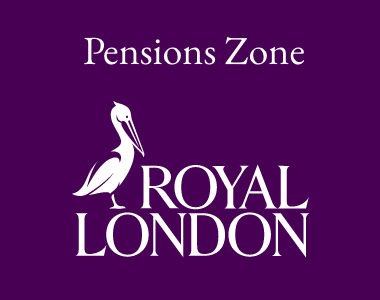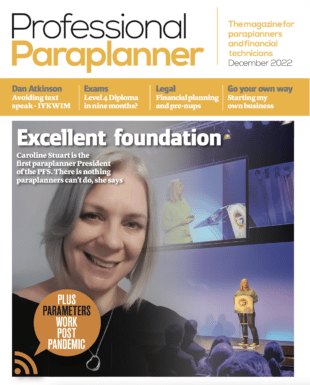For this month’s Brand Financial Training article for Professional Paraplanner, the exam team take a look at the what and the why of Qualifying Recognised Overseas Pension Schemes, post the 2024 Autumn Budget, particularly relevant for those taking R04, J05 and AF7 .
It is fair to say that there has been a fair bit of fall-out from the recent autumn budget, pension-related and otherwise. The main talking points included the increase in capital gains tax rates, application of inheritance tax to pensions and limits on the amount of inheritance tax relief available on farmland and qualifying company shares.
One significant change which flew relatively under the radar, however, was the removal of the exception to the overseas transfer charge for pension scheme members resident in the UK who transferred their pension to a scheme resident in the EEA or Gibraltar. This resulted in the closure of an unintended loophole in the legislation which allowed UK resident scheme members to benefit from two tax-free cash allowances by transferring some of their pensions overseas.
To understand the matter fully, it is first necessary to understand the principles behind the legislation relating to qualifying relevant overseas pension schemes (known by the acronym QROPS). The purpose of the legislation from a policy perspective was twofold. To meet European Union freedom of movement principles, it was necessary to allow UK pension scheme members the flexibility to move their pensions within the EEA or Gibraltar to suit their lifestyle. However, it was also necessary to ensure that this flexibility could not be manipulated in order to obtain an artificial tax advantage.
Where a UK scheme member looks to transfer a pension to an overseas scheme then the receiving scheme must meet a number of criteria. If it does not then the transfer will be classed as an unauthorised payment and will incur the punitive tax charges associated with such a payment.
Firstly, in order to qualify as a recognised overseas pension scheme (ROPS), the scheme must meet a number of criteria, which are as follows:
- a member state of the European Economic Area, Norway, Iceland or Liechtenstein;
- a country or territory (other than New Zealand) with which the UK has a double taxation agreement; or
- any other country or territory (including New Zealand) if the scheme rules dictate that:
- retirement benefits cannot be paid earlier than would be allowed under a UK registered pension scheme, and;
- residents of the country (or territory) can join the scheme.
AND
- if tax relief in respect of the benefits paid from the overseas scheme is available to
members who are not resident in the country/territory in which the scheme is set up, the same (or largely the same) tax relief has to
– also be available to any members who are resident in the country/territory; and
– apply regardless of whether the member was resident in the country/territory when they joined the scheme or during the period of membership.
Where the scheme has provided assurance to HMRC that it meets the qualifying criteria then it can be awarded QROPS status.
Where a transfer of benefits was made to a QROPS, it was historically subject to an overseas transfer charge of 25%. However, the overseas transfer charge could be avoided where the scheme itself complied with certain conditions. Those were in essence that the QROPS must be:
- established in the same country as the member making the transfer is resident;
- established in Gibraltar or a country within European Economic Area (EEA) and the member is UK resident or resident in a country within the EEA or Gibraltar;
- an occupational pension scheme and the member is an employee of a sponsoring employer under the scheme;
- an overseas public service scheme and the member is employed by an employer that participates in that scheme; or
- a pension scheme of an international organisation and the individual is employed by that organisation.
A QROPS is also required to confirm its eligibility for QROPS treatment to HMRC and to confirm on an ongoing five-yearly basis that it continues to meet the eligibility criteria. To complicate matters further, the charge can be applied retrospectively if the scheme ceases to meet the qualifying criteria for a QROPS within five years of the transfer being made
Historically, a transfer to a QROPS made prior to the age of 75 was tested against the lifetime allowance under benefit crystallisation event 8. A lifetime allowance excess tax charge at the rate of 25% was applied to any excess.
Under the new regime, in addition to the better-known lump sum allowance and lump sum and death benefits allowances, scheme members became entitled to another new allowance known as the overseas transfer allowance (OTA). This allowed members to transfer up to the value of their old lifetime allowance into a QROPS free of any UK tax liability, with any excess subject to the overseas transfer charge at 25%.
Under the newly introduced rules, the overseas transfer allowance worked independently of the lump sum and lump sum and death benefits allowances. This threw up an issue whereby scheme members who were UK resident could potentially crystallise UK pensions up to their old lifetime allowance, take their full tax-free cash entitlement and then transfer other pensions overseas, potentially benefitting from multiple tax-free allowances.
Notwithstanding that we have recently had a change of government, it appeared fairly clear on reflection that this was a flaw in the drafting of the law and not the manner in which it was intended to work. In the autumn statement, the chancellor confirmed that this exclusion will be removed for members who are UK resident and will only apply where both the member and the scheme are resident in the EEA or Gibraltar.
There is a transitional period available for any transfers which were requested prior to 30 October 2024 to be processed. However, this opportunity will not be available to any future applicants.
With all the further pension-related changes forthcoming, R04, J05 or AF7 students could be forgiven for wondering how many more of these little issues may come to light in future.
About Brand Financial Training
Brand Financial Training provides a variety of immediately accessible free and paid learning resources to help candidates pass their CII exams. Their resource range ensures there is something that suits every style of learning including mock papers, calculation workbooks, videos, audio masterclasses, study notes and more. Visit Brand Financial Training at https://brandft.co.uk
Main image: michal-mrozek-2Dq9hnPPHeg-unsplash





























